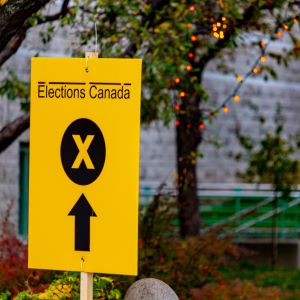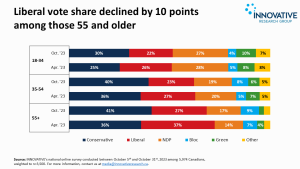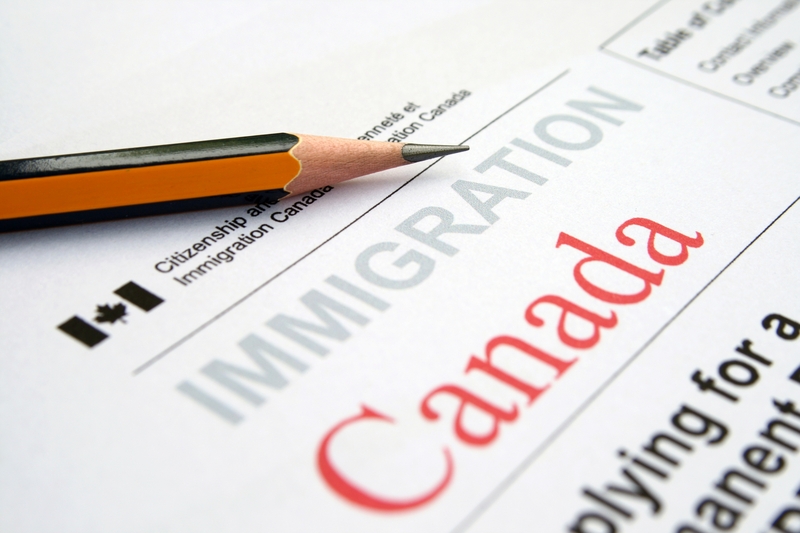

Earlier this week, The Hill Times released a report based on INNOVATIVE’s latest study, examining changes in federal vote distributions across 11 seat clusters with similar voting behaviour.
We found that:
- Liberals are 10 points behind Conservatives in CPC-to-LPC Defector ridings — 34 constituencies that flipped from Conservative to Liberal and helped secure the Liberals’ victory in the 2015 elections.
- Conservatives lead by 10 points in 30 CPC-LPC Swing constituencies in Ontario and by 18 points in 31 CPC-LPC Swing constituencies outside Ontario.
- Conservatives hold marginal leads in 29 constituencies that are consistently NDP and the 28 constituencies that can swing NDP.
- The race is also close within 42 LPC Strong constituencies, where Liberals lead Conservatives by 3 points, marking a significant shift from their 29-point advantage in the 2021 election.
Among all decided voters, Conservatives hold a 14-point lead over Liberals, with a 38% to 24% margin. Federal government approval is nearing an all-time low, with 3-in-5 expressing dissatisfaction. Conservatives lead in all regions except for Quebec and the Atlantic provinces, where they are tied with Liberals. In Ontario, Conservatives lead Liberals by 13 points, and in British Columbia, Conservatives enjoy a comfortable 21-point lead.
At 70%, the time for change sentiment is highest ever recorded, 8 points higher compared to Harper’s 2015 loss.
Pierre Poilievre now enjoys a 15-point lead as the preferred choice for Prime Minister, surpassing Justin Trudeau for the first time in our polling history.
Who moved over the past six months?
The decline in Liberal support is particularly evident among those aged 55 and older, a demographic group that traditionally has high voter turnout in elections. Among 55+, Liberals have lost 10 points, dropping from 37% in April to 27% in October. Conservatives now lead this segment by 14 points.
There is a notable shift in women’s perceptions. While there is a comparable decline in Liberal vote share among both men and women, women are now more negative towards Trudeau. The gender gap in Trudeau’s approval rating appears to have narrowed, decreasing from 13 to 4 points between April and October.
In summary, the Liberal benchmarks are in a state of flux, losing likely voters and key segments of their coalition. Our analysis, when overlaid onto seat projections, paints a challenging picture for the Liberals on election night.
































